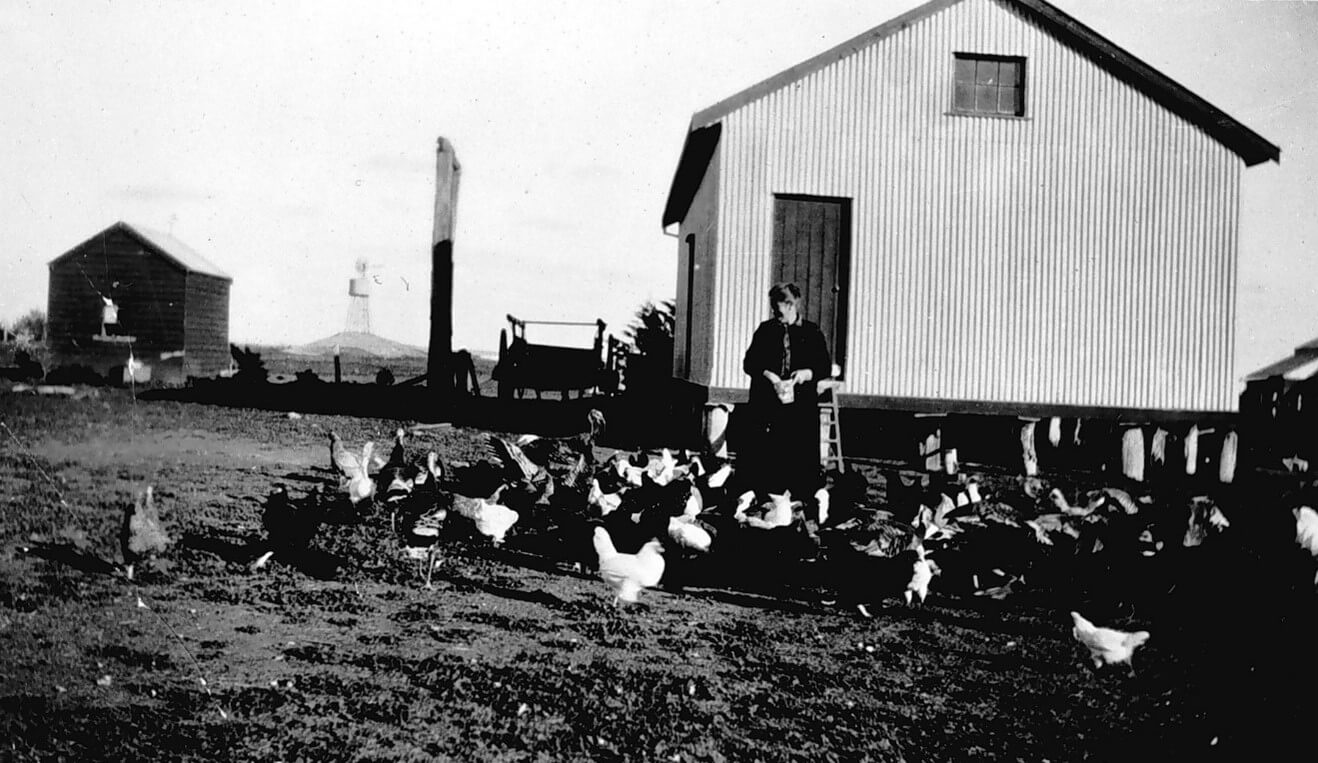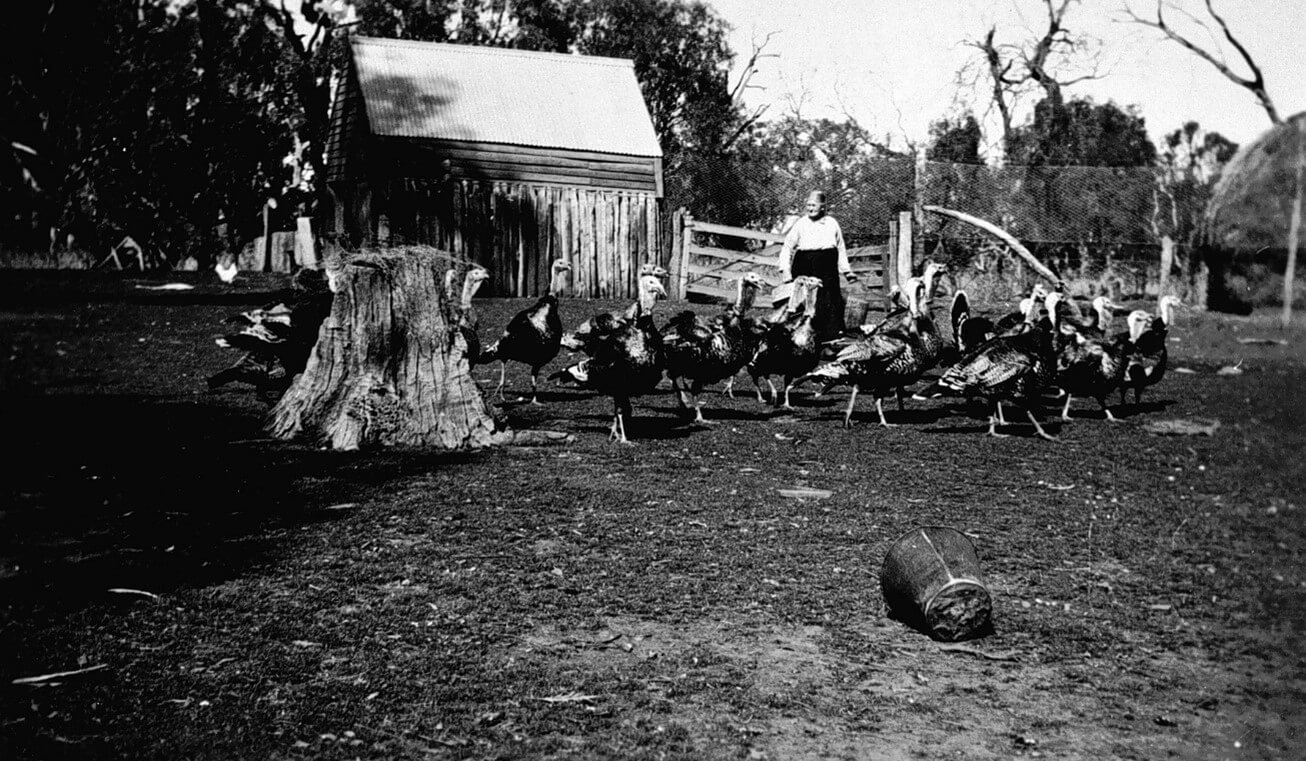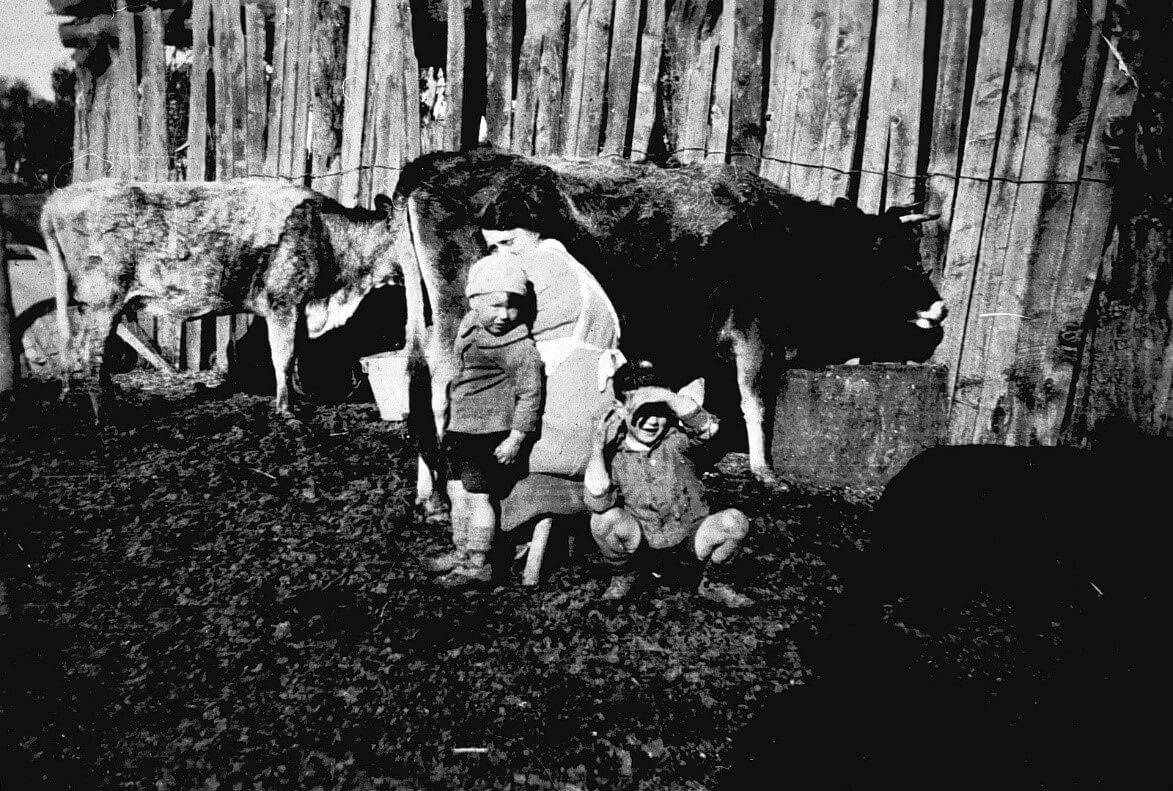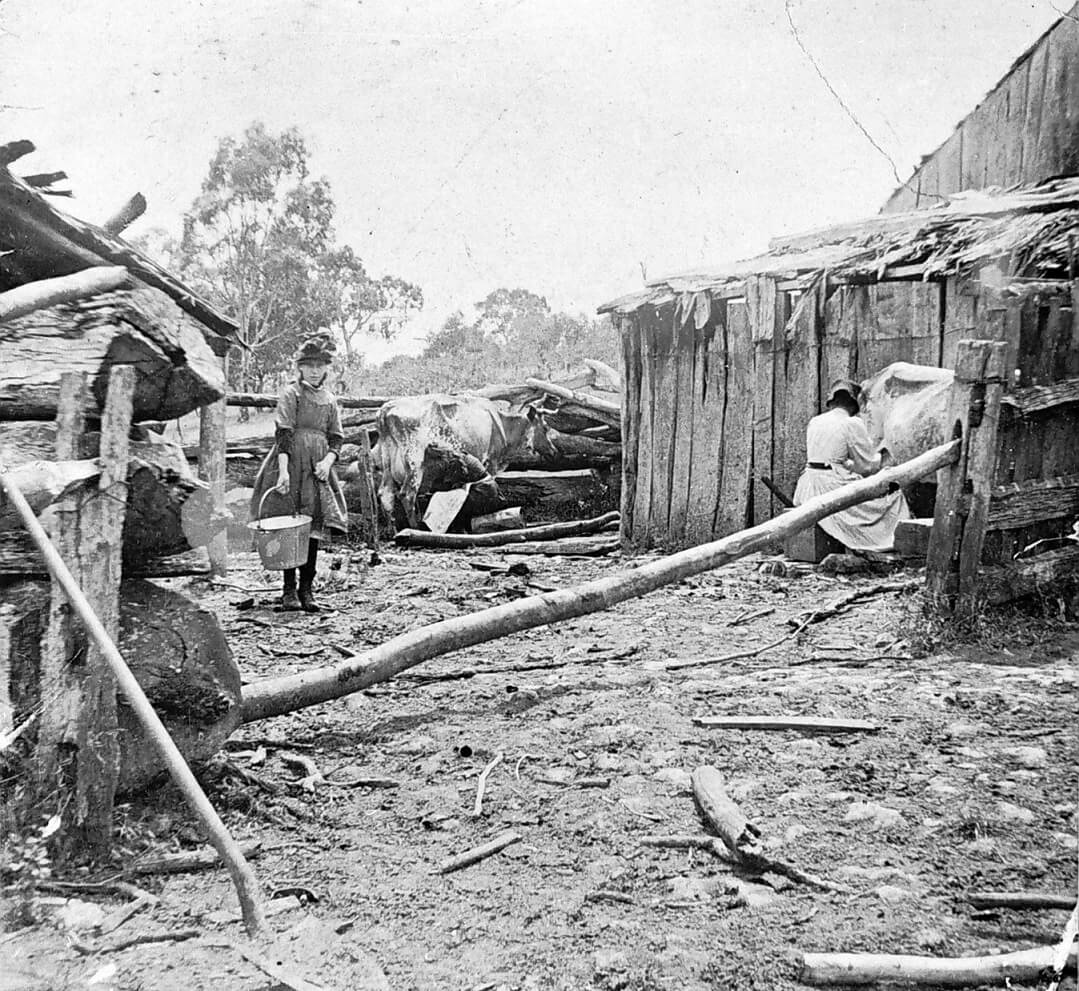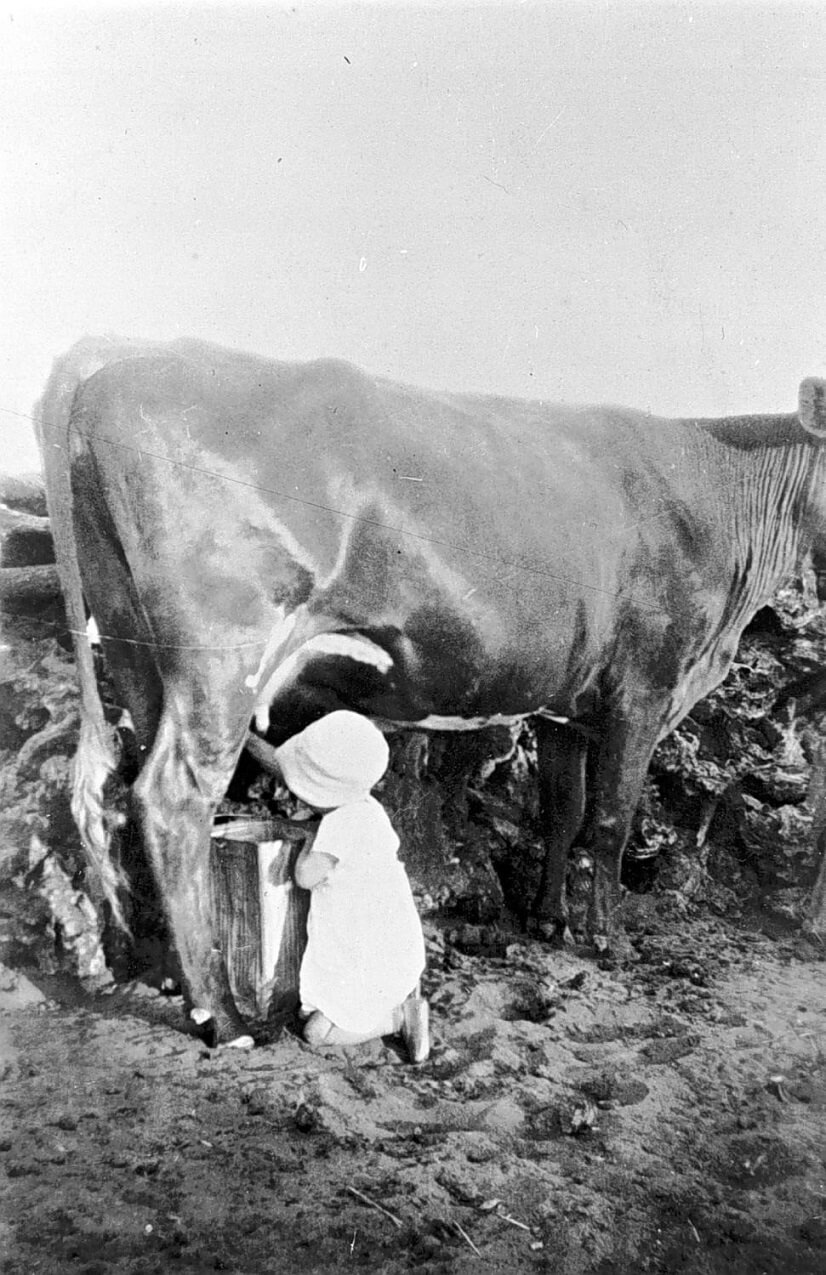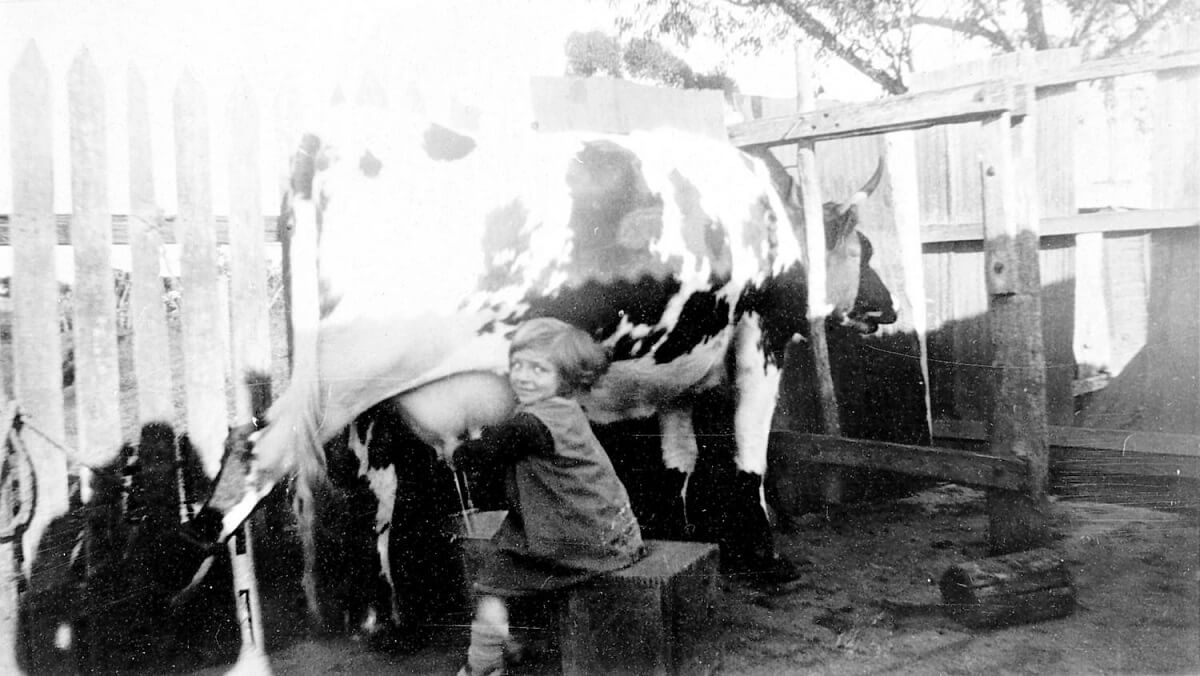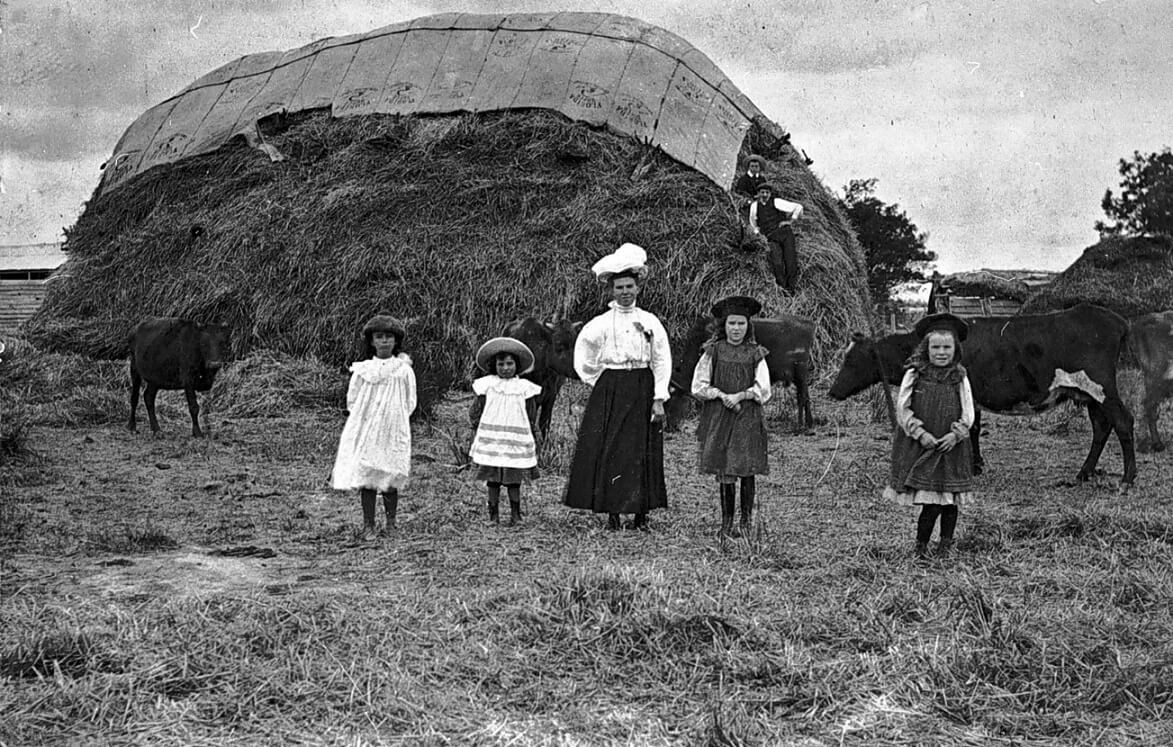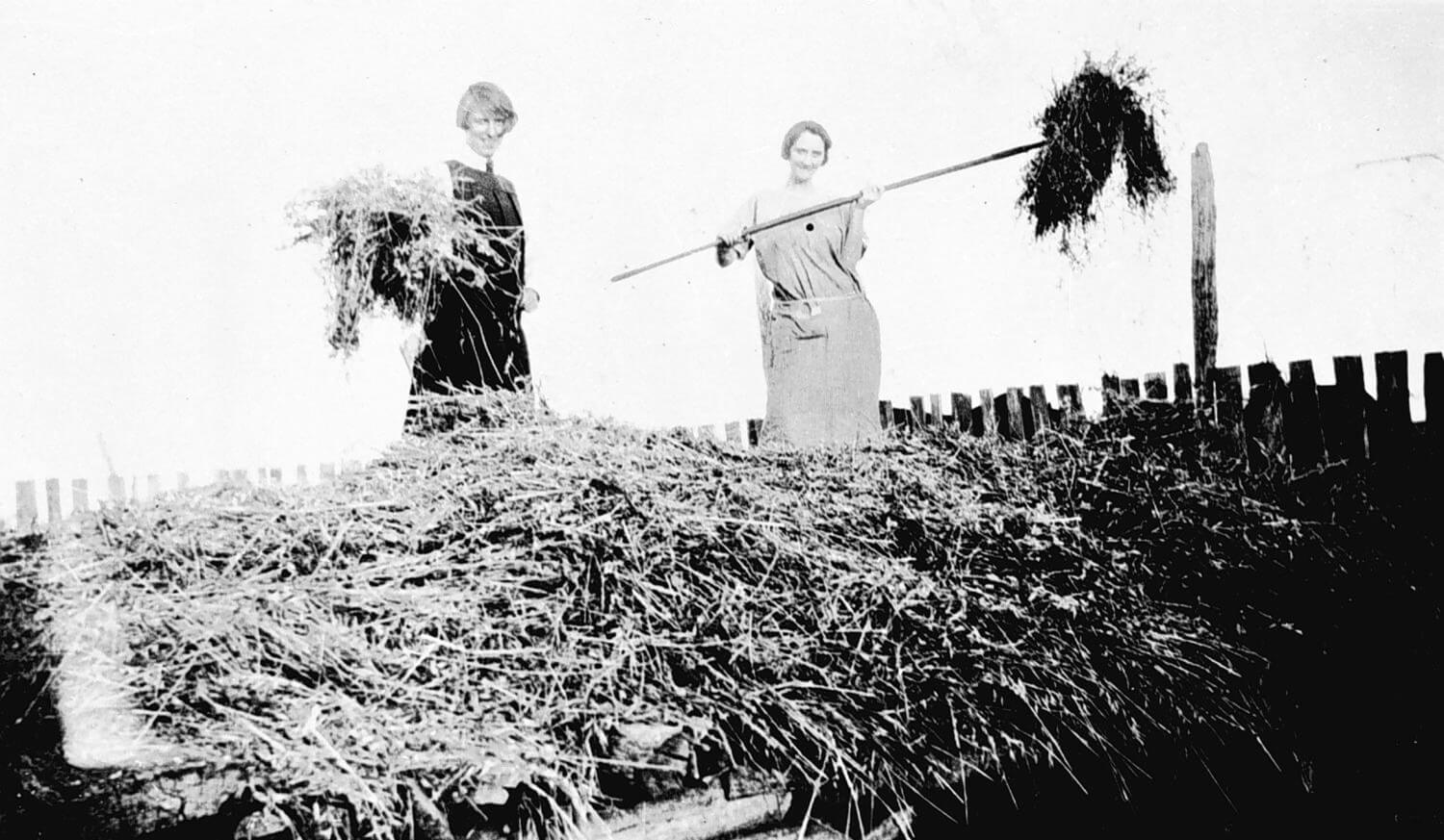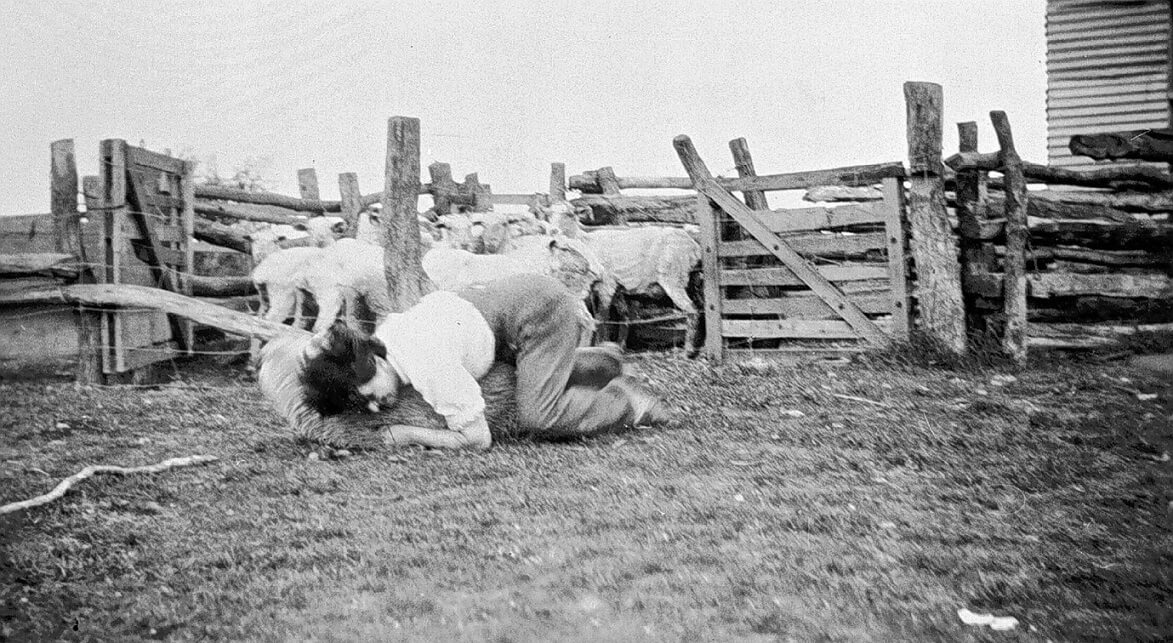Farming has always been regarded as a masculine occupation, but many women worked on farms in the past, even though their labour was not always either paid or acknowledged. Most wives and daughters helped with tasks that ranged from assisting with animal care to helping out at harvest time. The labour of some wives and daughters, notably those who lived on dairy farms, was often crucial to the survival of the farm. But there were also many paid employees, performing a range of jobs from milking to weeding vegetable crops. The 1891 Census of Victoria recorded that 10,861 women were employed in agriculture, compared with 123,996 men.
Woman feeding poultry, Dinboola, 1926
Reproduced courtesy Museums Victoria
Keeping poultry was a traditional role for women in rural areas. Generally they sold the eggs and sometimes also the birds themselves. This woman has a large flock of fowls and ducks.
Woman feeding turkeys, Boort district, c. 1915
Reproduced courtesy Museums Victoria
These are large turkeys, no doubt just about ready for sale. In the background on the right is a traditionally-made hay stack.
Farm wives and mothers often had a gruelling work load. We know about the work that some of them did because they managed to keep diaries — a pretty amazing feat in addition to everything else! Ann Currie (her full name was actually Sarah Ann Catherine Currie) was one such woman. Ann and John Currie married in 1864 and worked two farms, one at Ballan, north-west of Melbourne from 1873-75 and then a dairy farm in Lardner West Gippsland, from 1875. Her diaries cover the period from 1873-1916 and provide a wonderful record of daily life on a busy farm. The entire Currie family worked on the farm, including the children. John did all the heavy work of clearing the scrub, ploughing, sowing crops, harvesting and hay making and also cared for the cows. He was helped by his two boys Tom and Bert, who left school at the age of 10 to help. Like their father they cleared scrub, grubbed roots and felled trees, helped by their sister Kate. Both boys also worked off the farm at times. Tom took a job on the railways while Bert had a milk round from the age of 12. Ann did all the household work, sometimes helped by her eldest daughter Kate. The two smallest children walked, alone, over several miles to school.
The farm was almost self-sufficient. From pigs they raised Ann made sausages and hams for sale. She also bred fowls, ducks and geese and sold both eggs and poultry. She assisted with the milking, churned between 10 and 18 pounds of butter each week for sale and made cheese for home consumption. They grew fruit trees on the property and from the fruit Ann made jam, preserves and syrups. In the rare moments when she could sit, there was the ever-present sewing basket to hand. In addition to their clothing, Ann hemmed linen for pillow cases and sheets. No wonder she recorded in her diary on one occasion: ‘I am not half well, hardly able to crawl about, took a dose of Senna tea.’ Senna tea was a popular tonic at this time. It also had laxative properties. Ann may well have made the tea herself, since many women made their own medicines at this time. Of course child care also fell to the lot of these farm women. On busy farms it was almost impossible to watch small children every minute. The Curries lost one of their children as a toddler from drowning in the farm well. It was a tragic, but not uncommon, loss.
Mabel Pendlebury milking, Boosey Victoria, 1935
Reproduced courtesy Museums Victoria
Women with small children on dairy farms often had no option but to take them along to the milking shed. Here Mabel Pendlebury is accompanied by her two small sons, who are, literally, underfoot, regardless of the muck and mud of the cow shed.
Milking, Connewirricoo, c. early 1900s
Reproduced courtesy Museums Victoria
This photograph shows one woman and perhaps an older girl milking while another (younger) girl carries a full milk pail. Older girls often helped with the milking, sometimes taking full charge. This might involve more than an hour in the shed before and after school on a daily basis. The women milking seem to be sitting on upturned kerosene tins. Connnewirricoo is in the Wimmera.
Elma Wright ‘milking’, Prooinga, 1937
Reproduced courtesy Museums Victoria
While small children certainly knew their way around a milking shed, Elma does seem a bit small to milk herself. She’s barely bigger than the tin! But perhaps it was all part of familiarization.
Gladys Schultze milking, c. 1935
Reproduced courtesy Museums Victoria
Gladys is so small that her feet barely reach the ground from the milking stool, but she’s obviously got the milk flowing!
Family at harvest, Eldorado, c. 1910
Reproduced courtesy Museums Victoria
Harvest was always a time for celebration and that might be what is being recorded here. While the woman and four girls are posed standing in front of the haystack, a man and boy are posed on the stack itself. This might be an interim haystack, since it is partially covered with hessian bags.
Women pitching hay, Wando Vale, c. 1920s
Reproduced courtesy Museums Victoria
While harvesting was usually considered a male job, these two women are pitching hay with pitch forks. They seem to be standing on a wagon.
Rose Raphael catching a sheep, Chinkapook, 1931
Reproduced courtesy Museums Victoria
Although women were not welcome in the shearing shed, they certainly helped in the mustering. Here Rose Raphael wrestles an unshorn sheep to the ground.
The Soldier Settlement schemes established after both world wars envisaged providing an opportunity to settle returned servicemen on farms, but nursing sisters were also eligible to apply for blocks and some did so. We write about one such woman, Sister Nellie Veir Scott in the next section on the Soldier Settlement Scheme.
Women on Farms movement
In the late-twentieth century farm women began an active movement to recognise their contribution and to create opportunities for training and information exchange. The movement was known as ‘Women on Farms: the Victorian Rural Women’s Network’ and it held an inaugural ‘gathering’ in 1990 at Warragul. The gatherings continue and information about the network can be found here.

